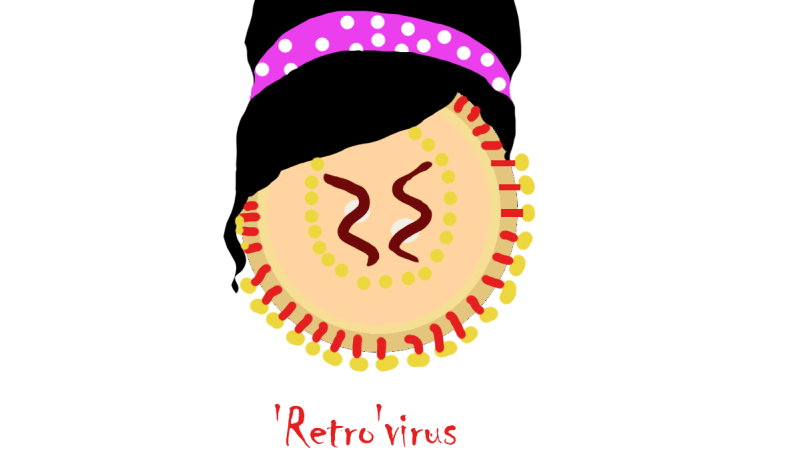
The name ‘retrovirus’ raises more questions than provide answers. The term ‘retro’ reminds us of disco balls, bouffant hairstyles and polka dots. However, a retrovirus is not merely a virus with questionable fashion sense! It is a virus belonging to a family of single-stranded RNA viruses.
In a retrovirus, there is an enzyme that allows the production of DNA (Deoxyribonucleic acid) from RNA (ribonucleic acid), and this is what leads to its unique nomenclature. In most organisms, the transcription is from DNA to RNA which involves a particular segment of DNA being copied into RNA using an enzyme known as RNA polymerase. Viruses cannot replicate on their own because they lack the cellular organisation and genes required for reproduction; thus they need a host cell to complete their life cycle. There are several ways in which viruses invade hosts, and different strains of viruses have different methods of doing so.
A simple example to illustrate the invasion of a virus is that of the common cold. Virions, the virus particles that are infective, are released when someone with a cold, sneezes. When a person standing next to him/her breathes the air with virions in, they stick to the cells lining the nose and the throat and then inject their genetic material (RNA) into the host cells. Once inside the host, the viral genome is turned into more viral proteins and viral genomes by the host's cell replication machinery, thus infecting more host cells, without being a part of the cells.
A retrovirus is slightly different because it inserts its genome into the host’s genome, thus becoming a part of the host cells. Typically, cells manufacture the necessary proteins with the help of the DNA that acts as a blueprint for producing these proteins. Since the DNA is restricted to the nucleus of the cell, copies of parts of this blueprint in the form of mRNA are made in a process is called transcription. This mRNA can leave the nucleus of the cell and be synthesised into proteins by a method called translation.
Retroviruses have a unique protein in the virions called reverse transcriptase that is responsible for turning the RNA genome into DNA. This newly synthesised DNA is then cut and pasted into the host cell DNA, and the host cell gets tricked into making a large number of proteins for the virus. The most common retrovirus is the human immunodeficiency virus or HIV, which conveys an idea of how fatally dangerous retroviruses are. HIV mutates very rapidly, and drug-resistant mutant strains arise frequently faltering drug treatments. Also, the rapid replication rate complicates vaccine development; new strains that are unaffected by the vaccines can infect individuals who were vaccinated against the original strain.
On a slightly more positive note, however, retroviruses happen to be valuable research tools in the field of molecular biology. They have been used extensively and successfully in gene delivery systems (a necessity in gene therapy for the introduction or silencing of a gene to provide a therapeutic outcome in a patient).





